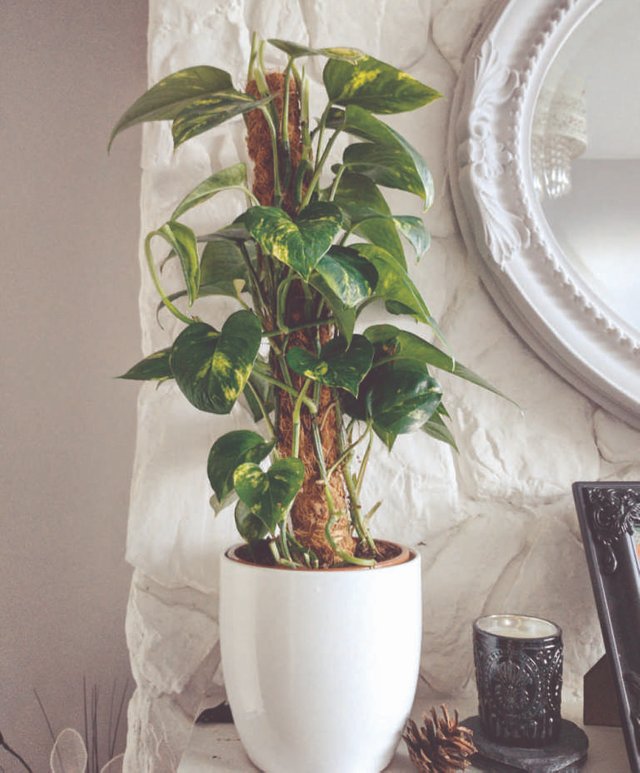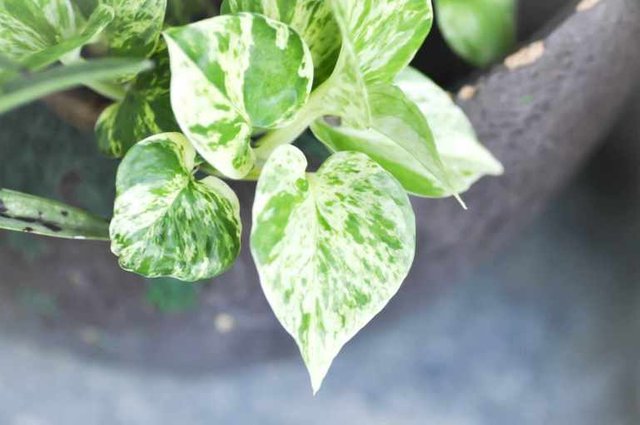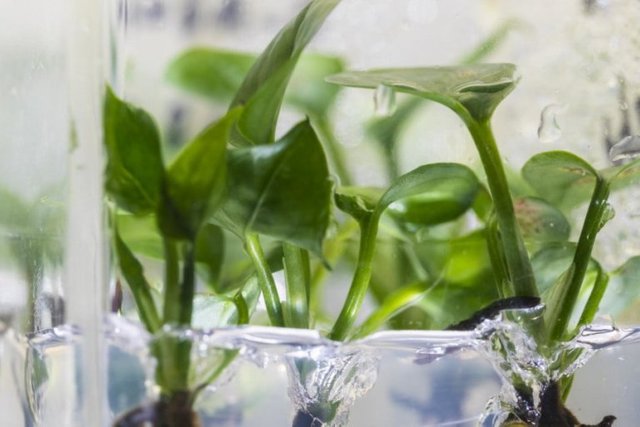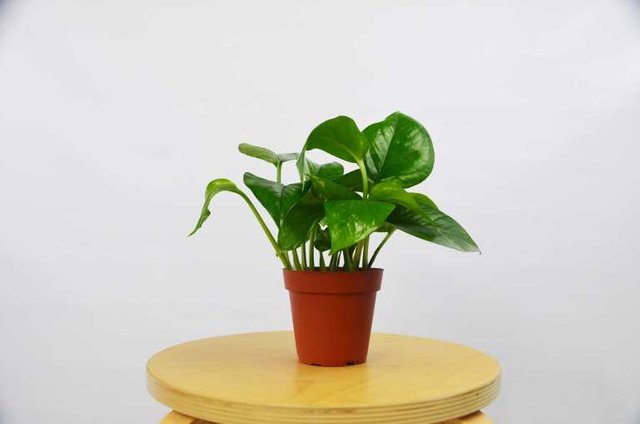Ivy of pothos genetically modified: a houseplant to purify the air.

There are many air purification devices for homes on the market.
On the other hand, the majority of these air purifiers are far from being as effective as expected, to see for some more more polluting and harmful than the particles that one wishes to make disappear, as ANSES underlines in a report published in September 2017.
Everyone wants to keep the air of their house or apartment as clean as possible, and some people sometimes use High Efficiency Particulate Air (HEPA) air filters to keep away allergens and dust particles.
However, some dangerous compounds are too small to be trapped in these filters.
Small molecules such as chloroform, present in small amounts in chlorinated water, or benzene, a component of gasoline, accumulate in our homes when we take a shower or boil water, or when we store cars or lawn mowers in adjoining garages.
Exposure to benzene and chloroform has been linked to cancer for several years.

PURIFYING THE SURROUNDING AIR WITH A PLANT
Researchers at the University of Washington (USA) have now genetically modified a common dwelling plant, pothos ivy, to remove chloroform and benzene from the surrounding air.
The findings of this research are published in the journal Environmental Science & Technology on Wednesday, December 19, 2018.
The modified plants express a protein, called 2E1, that converts these compounds into molecules that plants can then use to support their own growth.
The authors indicate that "the majority of people are not really aware of the presence of these harmful organic compounds in homes, and especially because we can not do anything about it. Now we have designed houseplants to eliminate these pollutants. "

THE IVY OF POTHOS PURIFIES THE AIR INSIDE OF HOUSES
To carry out this research, the team decided to use a protein called cytochrome P450 2E1, or 2E1, which is present in all mammals, including humans.
In our body, 2E1 converts benzene into a chemical called phenol and chloroform into carbon dioxide and chloride ions.
But 2E1 is located in our liver and is activated when we drink alcohol. So, it is not available to help us treat the pollutants in our air.
"We decided to make this reaction happen outside the body in a plant, an example of the concept of" green liver ". And the 2E1 can also be beneficial for the plant. Plants use carbon dioxide and chloride ions to make their food, and phenol to make the components of their cell walls, "say the researchers.

They created a synthetic version of the gene that serves as instructions for making the 2E1 form in rabbits. Then they introduced it into ivy so that every cell in the plant expresses the protein. Pothos ivy does not flower in temperate climates, so genetically modified plants will not be able to spread via pollen.
This whole process has taken more than two years to get a very accurate result, and the pothos ivy is a sturdy houseplant that grows well in all kinds of conditions.

The researchers then tested to what extent their modified plants could remove air pollutants compared to normal pothos ivy.
They put both types in glass tubes and then added benzene or chloroform in each tube. For 11 days, the team followed the evolution of the concentration of each pollutant in each tube.
For unmodified plants, the concentration of either gas has not changed over time. But for the modified plants, the chloroform concentration dropped by 82% after three days and was almost undetectable by the sixth day. The concentration of benzene also decreased in the vials of modified plants, but more slowly. By the eighth day, the benzene concentration had decreased by about 75%.
In order to detect these changes in pollutant levels, researchers used pollutant concentrations much higher than those commonly found in homes. But the team expects home levels to drop in the same way, if not more quickly, over the same period.
"The plants in the house should also be in an enclosure with something to move the air beyond their leaves, like a fan. If you have a plant growing in the corner of a room, it will have a effect in this room. But without airflow, it will take a long time for a molecule at the other end of the house to reach your plant, "say the authors.

Finally, the team is currently working to increase the capacity of plants by adding a protein capable of breaking down another dangerous molecule present in the ambient air: formaldehyde. The latter is present in some wood products, such as laminate flooring and cabinets, and tobacco smoke.
"These are all stable compounds, so it's very difficult to get rid of them. Without proteins to break down these molecules, we should use high energy processes to do this. It's so much simpler and more sustainable to put all these proteins together in a houseplant, "the researchers conclude.
Until this plant is available on the market, do not hesitate to buy its classic version, which is easy to find and does not require much maintenance.
And for the air quality of your home, do not forget to follow certain instructions, especially if you have children or allergies: well ventilate, avoid all pollutants, ban deodorants and other anti-odor (bio or not), and if you use candles and incense, take care to choose the most natural versions and ventilate to the maximum.
SOURCES
« Greatly Enhanced Removal of Volatile Organic Carcinogens by a Genetically Modified Houseplant, Pothos Ivy (Epipremnum aureum) Expressing the Mammalian Cytochrome P450 2e1 Gene. », Environmental Science & Technology, 2018; DOI: 10.1021/acs.est.8b04811
Actually this will be the first time i will hear of this type of air purify. Thanks for sharing
To listen to the audio version of this article click on the play image.

Brought to you by @tts. If you find it useful please consider upvoting this reply.